Homeowners Guide to Catching Rats & Mice

WHY IS IT NECESSARY TO KILL RATS & MICE?
THEY DAMAGE HOMES
Every year, rats and mice enter 21 million U.S. homes uninvited. They reproduce rapidly, and can cost thousands of dollars in damages and extermination costs. They can ruin equipment, spoil food and start fires by chewing on wires.
THEY CAN CARRY DISEASE
Rats and mice can carry diseases such as hantavirus, leptospirosis, bubonic plague and rat bite fever. They can host fleas and ticks that can carry lyme and other diseases.
RODENT CONTROL METHODS
We believe that rats and mice deserve an instant and painless death. Sadly, some of the most common ways to kill rats and mice are incredibly cruel. Glue traps are a cruel way to end a rodent’s life and poisons result in a slow, painful death and exposes pets, other wildlife and children to the risk of harm. Every year vets treat thousands of pets for rodent poisoning.We’ve trapped millions (seriously, millions) of rats and mice and the knowledge of what it takes to achieve success is highlighted in this guide.
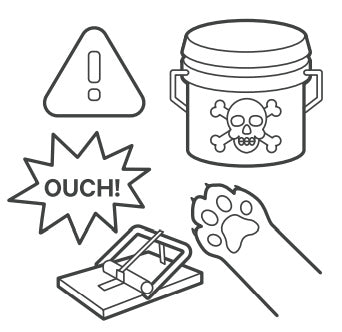
RATS & MICE CAN...
- Damage your home or business
- Carry diseases
- Reproduce rapidly
- Cost you thousands of dollars
- Start fires by chewing through wires
- Contaminate food & countertops
TRAPPING RATS
NEOPHOBIA — A FEAR OF ANYTHING NEW
Rats are neophobic — they are afraid of anything they have not seen, smelled or tasted before. For example, when a rat encounters a new food source, they will only try a tiny amount to see if it makes them sick. If it does, they’ll never eat it again.
A trap is something new to the rat and they will initially fear it. This is why it can take several days or even weeks to trap a rat. To combat this there are several things you can do.
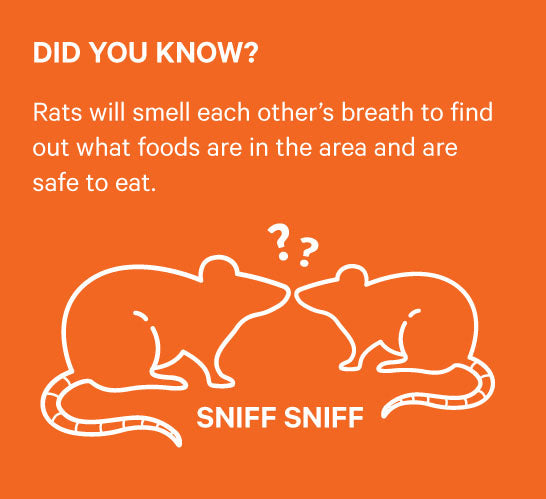
TRAPPING PRO TRIPS
ELIMINATE FOOD COMPETITION
Try to find out what the rats are eating. This food source is competition to your bait and trap. The best thing you can do is eliminate the food source all together. For example, if rats are in a chicken coop – clean up all of the uneaten feed and store it somewhere that the rats cannot get. Rats are much more likely to try something new if they are hungry.
USE A CAMERA
Every trapping site is different and using what you learn from a camera can be crucial. Using a camera helps you track rat movements around your trap. This is a great way to understand what’s going on and how to improve.
PRE-FEED NEAR YOUR TRAP
Because the rat is afraid of your trap and bait, it is best to pre-feed your trap site. That means you should put bait by itself around the trapping area, so rats can discover it and become comfortable with it as a food source. This way, when it finds the bait in the trap it will be more likely to go for it.Pre-feeding is like the sample counter at the grocery store — a proven marketing strategy on people and rats!
HOW TO PRE-FEED
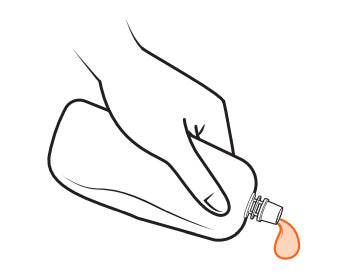
1. LURE THEM IN
Place small dots of bait around the entrance of your trapping area. This increases the food available to rats and mice.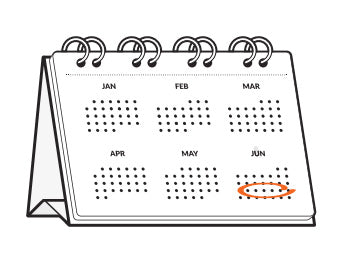
2. REPEAT THE PROCESS
Repeat this for five days. This builds their preference for the bait and gets them in the habit of visiting the trap(s) to eat.3. STOP PRE-FEEDING
Now the only way your animals can access the lure is by entering your trap.Learn more about pre-feeding and how it can help increase your trapping success.

LOCATION, LOCATION, LOCATION!
FIND YOUR TRAPPING LOCATION
Rats are comfortable in places where they are hidden and covered. Do not place a trap on a runway where you see them running from spot to spot. Those areas are places where the rat is unlikely to stop and investigate the trap. If you don’t catch anything in the first couple of days — move your trap to a new location.Moving your trap regularly helps catch all the rats, as there’s often more than one. The image below shows some good spots to place your trap. Remember, for rats it’s all about finding a sheltered and safe area where you suspect rodent activity, not just throwing the trap up near a food source.
Finally, never stop trapping! Once you clear out the pests you have, set up a trap with a long-life bait to catch the next rats to come along, days or weeks later.
URBAN TRAPPING LOCATIONS
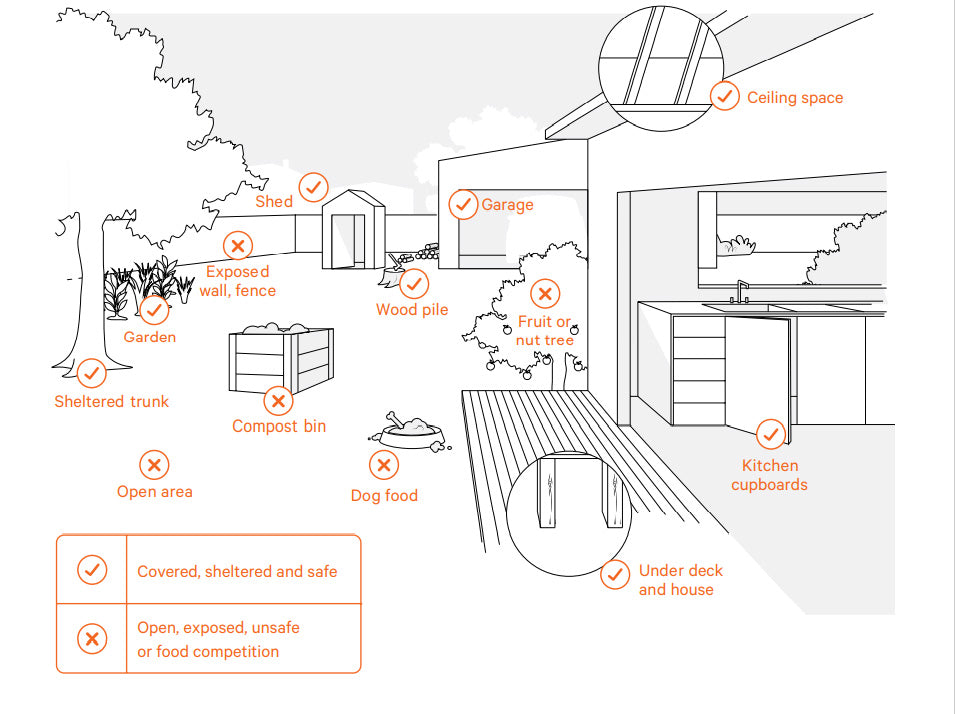
RURAL TRAPPING LOCATIONS
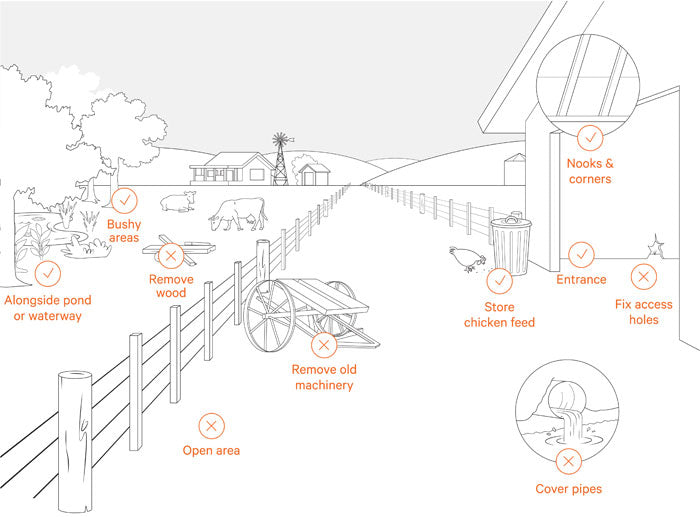
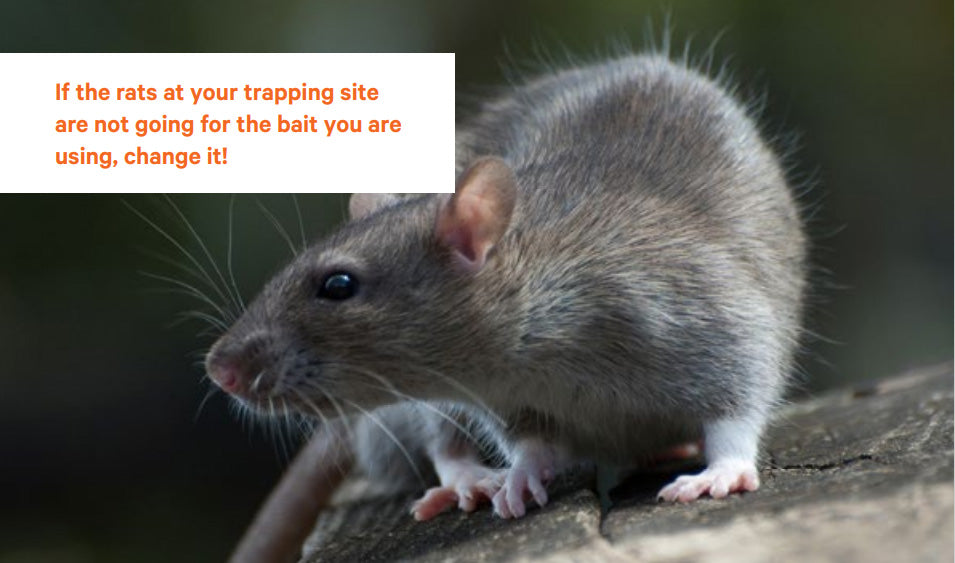
TRY A DIFFERENT BAIT
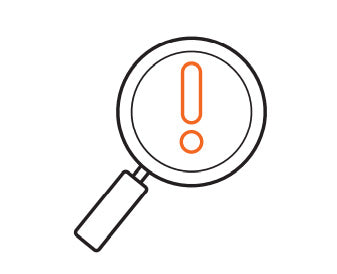
GIVE THEM WHAT THEY WANT
If you know that rats are getting into the dog food, chicken coop, horse feed or any other food source, you can try to make bait from it. Home-made bait will usually work for a few days; it will need to be regularly refreshed.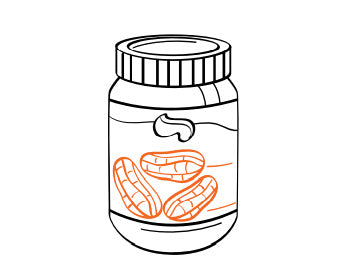
PEANUT BUTTER
Peanut butter is the most popular bait homeowners use and for good reason — it works great! However, peanut butter is really only effective for 2 nights, as it spoils quickly. Remember to replace the peanut butter every day or two.TRAPPING MICE
EASIER THAN TRAPPING RATS
The House Mouse is the most common species of mouse in North America. While they are easier to catch than rats, they reproduce quicker, and they go unnoticed longer so often a homeowner will have many — even dozens of mice by the time they discover one.
A mouse is likely to create its home close to a food source. Mice like the kitchen or beneath the sink or in the walls. They also like being cozy and will make their nests on fibrous, soft materials like dry grass, old clothing, and papers.
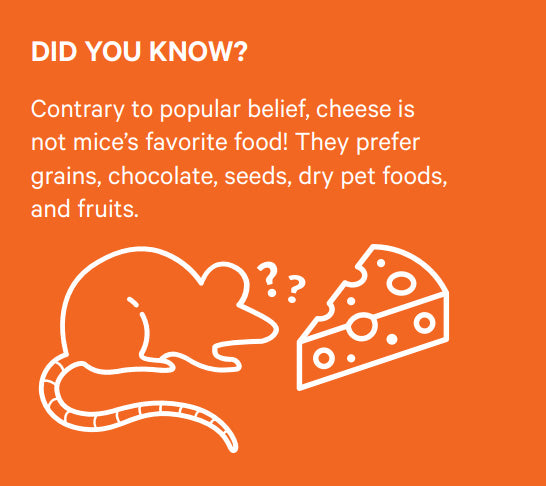
TRAPPING PRO TRIPS
PRE-FEED YOUR TRAP
It is best to pre-feed your trap site. That means you should put bait by itself around the trapping area, so mice can discover it and become comfortable with it. This way, when it finds the bait in the trap, it will be more likely to go for it.
SET MULTIPLE TRAPS
Because mice are usually numerous, it is important to set many individual traps, or to use an automatic trap that will kill many mice in a single night.
DON'T STOP TRAPPING
Never stop trapping! Once you clear out the pests you have, set up a trap with a long life bait that catches the next mouse to come along.
USE A CAMERA
Every trapping site is different and using what you learn from your cameras is crucial. Using a camera helps you track mouse movements around your trap. This is a great way to understand what’s going on and how to improve.

COMMON RAT & MOUSE SPECIES
RATS
Brown Rat a.k.a. Norwegian Rat
(Rattus norvegicus)Norway rats are larger than most other types of rats, ranging anywhere from 15 to 20 inches total, including the tail. They can weigh as much as a pound. Norway rats are omnivores and will eat nearly anything they can get their paws on. This includes small birds, eggs, all types of plants and small invertebrates.
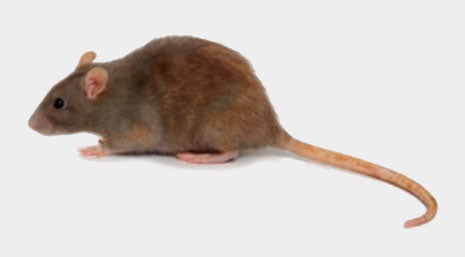
Black Rat a.k.a. Roof Rat
(Rattus rattus)Darker than brown rats, they are usually about 5 to 7 inches long, with a tail that measures up to 8 inches. They can weigh up to half a pound. Despite being known as black rats, they can also be medium or light brown in color and have a lighter underside. Their fur is usually scraggly. Black rats are omnivores as well and eat a wide variety of foods, including seeds, fruit, stems, leaves, insects, and small animals such as birds. They’re especially drawn to food left out for dogs and cats.
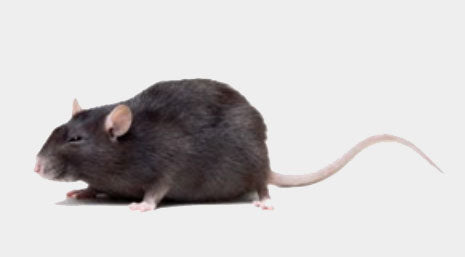
House Mouse
(Mus musculus)A black rat is 1-4 inches in length, including its tail, with weight ranging between 0.4 and 1 ounces. They may be grey, brown, or even white in color, and have a triangular snout with long whiskers. A mouse also has a floppy, large ear, and a thin, hairy, long tail. They exist across North America and can survive up to 6 years, though the majority live for a year. The house mouse is timid, social, nocturnal, and territorial. They are much easier to catch than their rat cousins.
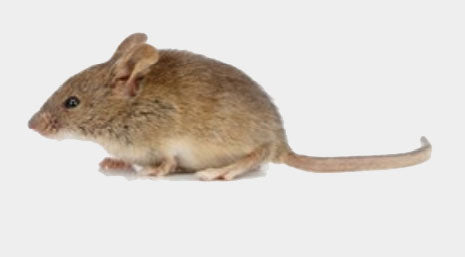
Still not sure if you have rats or mice? Learn more about the differences between them.
RAT & MOUSE TRAPPING CHECKLIST
TRIAL AND ERROR
Trapping is like fishing, the world’s best fishing rod and lure still need to be used properly for success. Rat and mouse trapping is no different — following best practices and learning from your mistakes is the easiest way to find success.

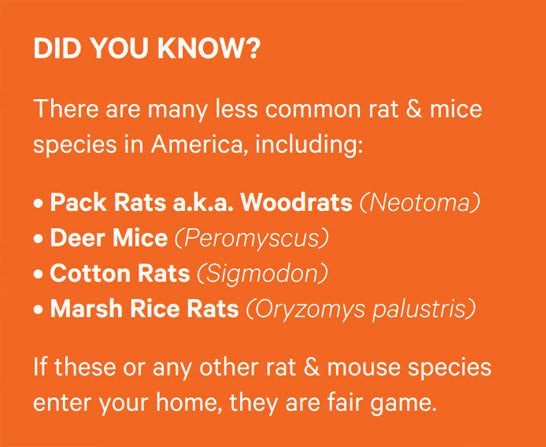
TRAPPING CHECKLIST
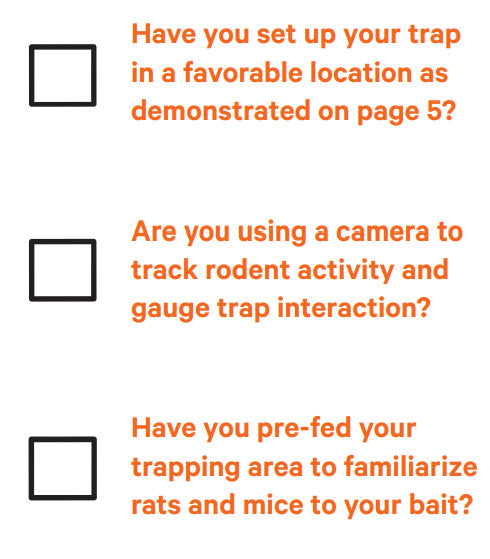
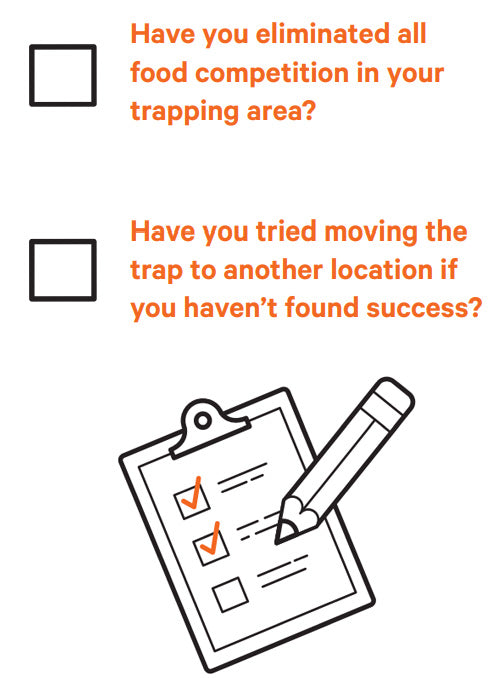
THE A24 HOME TRAPPING KIT
YOUR COMPLETE TRAPPING SOLUTION
The Goodnature A24 Home Trapping Kit is an automatic, non-toxic, safe, and easy to use trap that gives you constant control of your rat and mouse problem. No more checking and resetting traps, it resets automatically, 24 times. Also, our lures are toxin free with no need for nasty poisons, so you know it’s safe. To learn more about the Goodnature product line head to goodnature.ca or ask your local hardware store.
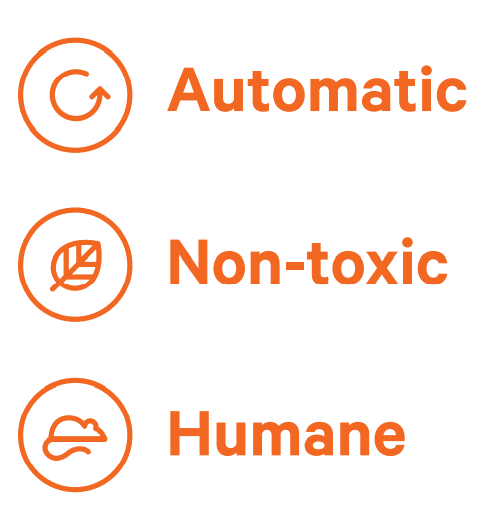
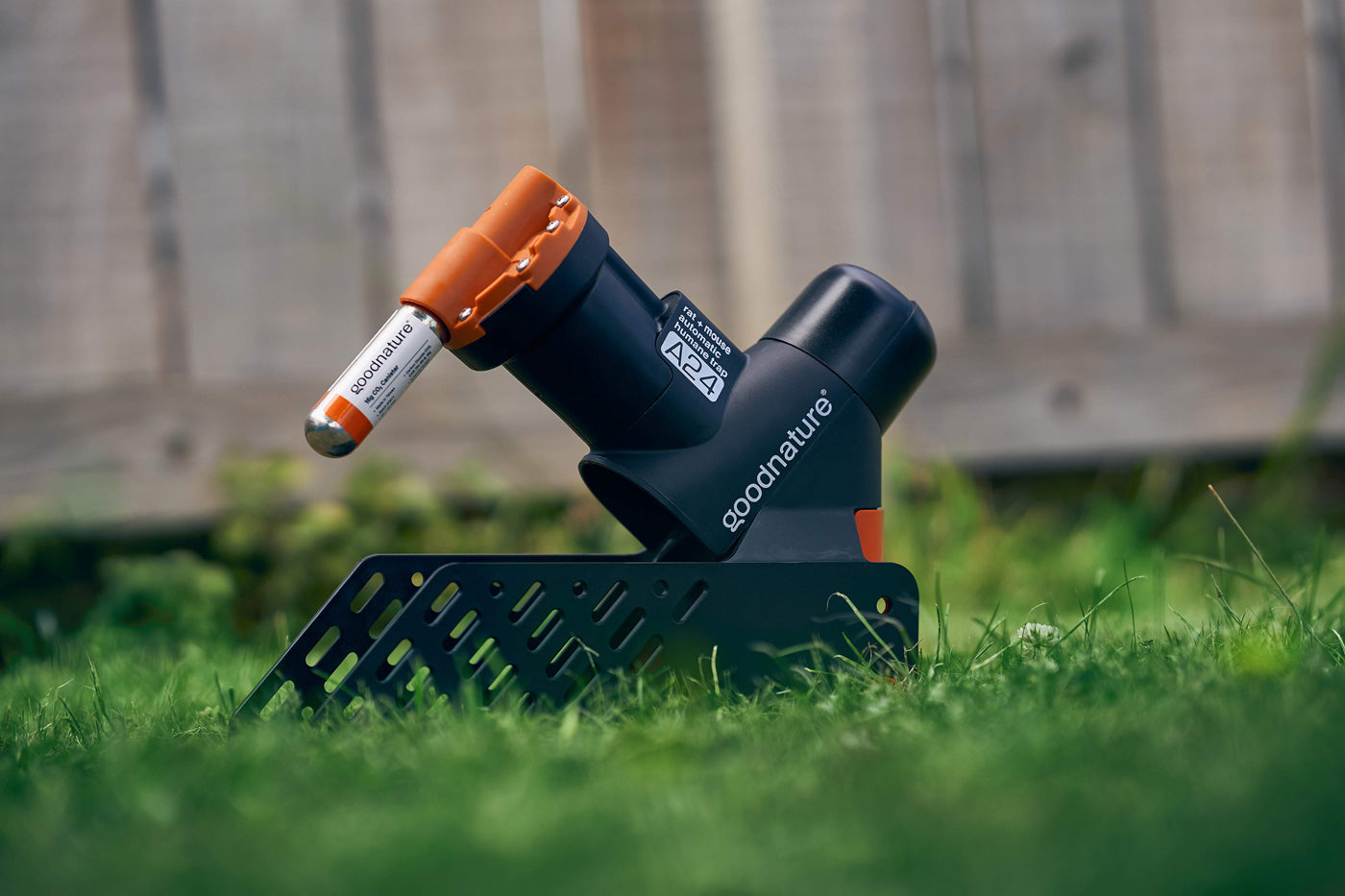
HOW THE A24 TRAP WORKS
IT ALL STARTS WITH A SNIFF
Our traps are a little different from others. They use CO2 which allows them to automatically reset. The rat or mouse enters the A24 through the opening at the bottom of the trap. Enticed by the lure, the rat or mouse sticks its head up causing the trigger to trip and fire a striker powered by CO2, instantly killing the rodent. Seconds after this, the A24 resets and is ready for the next pest, giving you constant control.
TRAP SAFELY
We’ve done extensive testing to ensure that the striker in our A24 traps goes off every time, without fail. Whenever there is a pest in your trap, you can trust that the trap will do its job, the animal will not suffer, and you aren’t using nasty toxins that could harm the environment, pets, or children.
